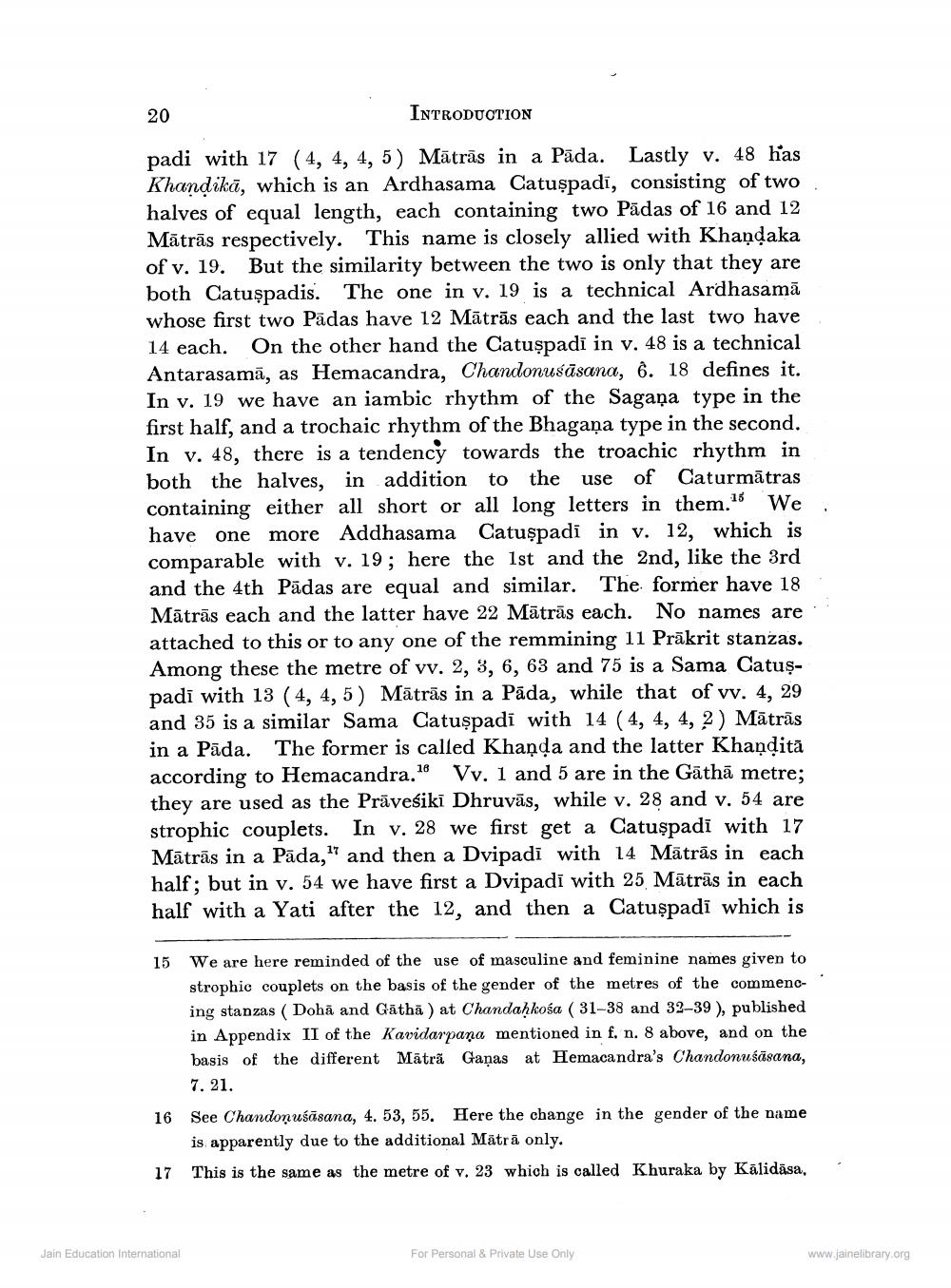________________
20
INTRODUCTION
padi with 17 (4, 4, 4, 5) Mātrās in a Pāda. Lastly v. 48 hias Khandikā, which is an Ardhasama Catuspadi, consisting of two halves of equal length, each containing two Pädas of 16 and 12 Mātrās respectively. This name is closely allied with Khandaka of v. 19. But the similarity between the two is only that they are both Catuşpadis. The one in v. 19 is a technical Ardhasamā whose first two Pädas have 12 Mātrās each and the last two have 14 each. On the other hand the Catuspadi in v. 48 is a technical Antarasamā, as Hemacandra, Chandonusāsana, 6. 18 defines it. In v. 19 we have an iambic rhythm of the Sagaņa type in the first half, and a trochaic rhythm of the Bhagaņa type in the second. In v. 48, there is a tendency towards the troachic rhythm in both the halves, in addition to the use of Caturmātras containing either all short or all long letters in them. We have one more Addhasama Catuşpadi in v. 12, which is comparable with v. 19; here the 1st and the 2nd, like the 3rd and the 4th Pädas are equal and similar. The former have 18 Mātrās each and the latter have 22 Mātrās each. No names are attached to this or to any one of the remmining 11 Prākrit stanzas. Among these the metre of vv. 2, 3, 6, 63 and 75 is a Sama Catuspadi with 13 (4,4,5) Mātrās in a Pāda, while that of v. 4, 29 and 35 is a similar Sama Catuspadi with 14 (4, 4, 4, 2) Mātrās in a Pāda. The former is called Khanda and the latter Khandită according to Hemacandra. Vv. 1 and 5 are in the Gathā metre; they are used as the Prāvesiki Dhruvās, while v. 28 and v. 54 are strophic couplets. In v. 28 we first get a Catuşpadi with 17 Mātrās in a Pāda, 17 and then a Dvipadi with 14 Mātrās in each half; but in v. 54 we have first a Dvipadi with 25 Mātrās in each half with a Yati after the 12, and then a Catuşpadi which is
15 We are here reminded of the use of masculine and feminine names given to
strophic couplets on the basis of the gender of the metres of the commencing stanzas (Dohā and Gatha ) at Chandahkoša ( 31-38 and 32-39), published in Appendix II of the Kavidarpaņa mentioned in f. n. 8 above, and on the basis of the different Mātră Gaņas at Hemacandra's Chandonuśāsana, 7. 21.
16
See Chandoņuśāsana, 4. 53, 55. Here the change in the gender of the name is apparently due to the additional Mātrā only. This is the same as the metre of v, 23 which is called Khuraka by Kālidāsa
17
Jain Education International
For Personal & Private Use Only
www.jainelibrary.org




